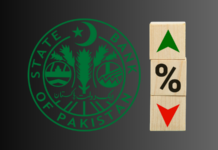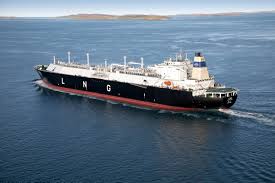The government is increasingly relying on gas imports to meet energy needs of various sectors, as a slowdown is witnessed in oil and gas exploration activities.
The incumbent government has drafted a five-year gas import strategy to tackle the deficit. Petroleum and Natural Resources Minister Shahid Khaqan Abbasi revealed plans of importing gas over the five years, equivalent to current domestic production at a meeting on energy reforms. The meeting was also attended by a World Bank representative.
Energy crisis has severely challenged the industrial units who have either been forced to shut down or move operations to other countries.
The first liquefied natural gas (LNG) terminal is already operational and is engaged in processing imports from Qatar. The terminal has a handling capacity of 600 million cubic feet per day (mmcfd), and is responsible for gas provision to industrial units, fertiliser plants, power producers and compressed natural gas (CNG) outlets.
A senior official of the Ministry of Petroleum stated that as per the import plan, three long pipelines would be laid and six LNG terminals would be built.
Work on the second LNG terminal is underway with the same 600 mmcfd handling capacity is expected to be completed in June this year. LNG supply from the said terminal will be allocated to three LNG-based power plants being set up in Punjab.
Moreover, another terminal is being set up by Turkish firm Global Energy and a fourth terminal is under construction by Shell, the official revealed.
Among the planned LNG pipelines, the first pipeline that could carry 1.2 bcfd has already been laid. It is supplying LNG from the first terminal where cargoes are being brought from Qatar and by Gunvor.
Sui Northern Gas Pipelines Limited (SNGPL) has approved the laying of the second gas transmission line with 1.2 bcfd capacity to be linked with the terminals being set up by Global Energy and Shell.
The third pipeline namely North-South pipeline will be built by Russia, which will run from Karachi to Lahore.
At present, Pakistan’s natural gas production of 4 bcfd is being utilised to meet the demand of domestic consumers. The government plans to utilise domestic production of gas for the domestic consumers only and use imported gas for meeting energy needs of commercial and industrial consumers.
Once the projects under the China-Pakistan Economic Corridor (CPEC) become fully functional, imported gas will be transmitted to the industrial units expected to be set up in the special economic zones under CPEC.
In order for the gas import plan to take off smoothly, reforms are under review. As part of these reforms, SNGPL and Sui Southern Gas Company (SSGC) will be split into 8 companies. A deadline of June 30 has been set to execute this plan.
In order to break the monopoly of state-run gas utilities, Pakistan is following World bank’s proposal to allow penetrations of the private sector to utilise the existing pipeline network for marketing and distribution of imported gas to different sectors of the economy.
Moreover, the Ministry of Petroleum will be working to reform the downstream gas sector with the consultation of key stakeholders.
Although the government has drafted the gas import policy, there is not much focus being paid on making new explorations of domestic oil and gas reserves. Several foreign companies have pulled out of Pakistan on account of lack of incentives and bureaucratic impediments.
With the mounting circular debt, rising imports are likely to increase pressure on foreign currency reserves of the country.

























